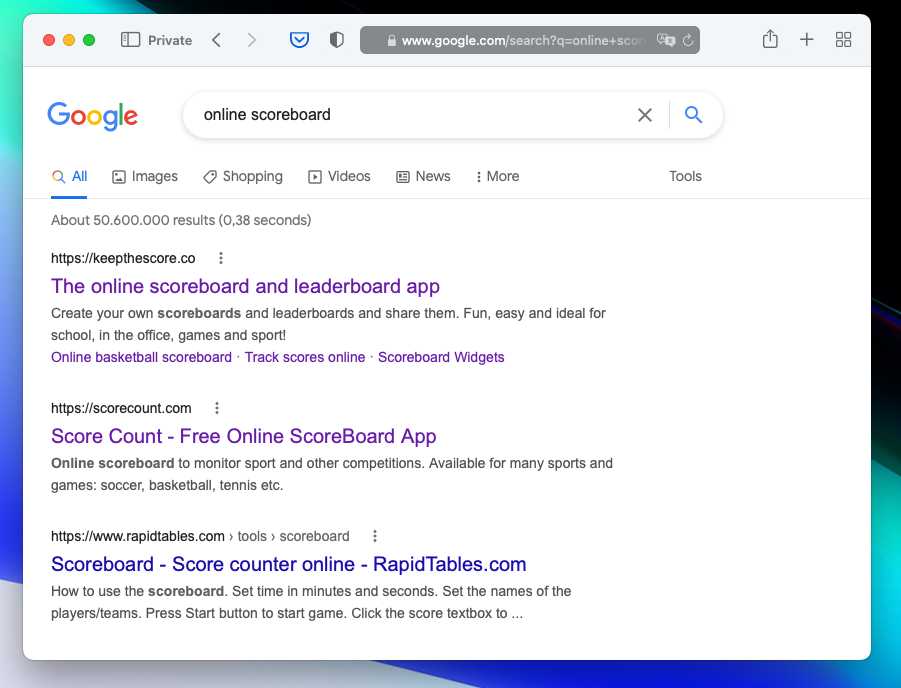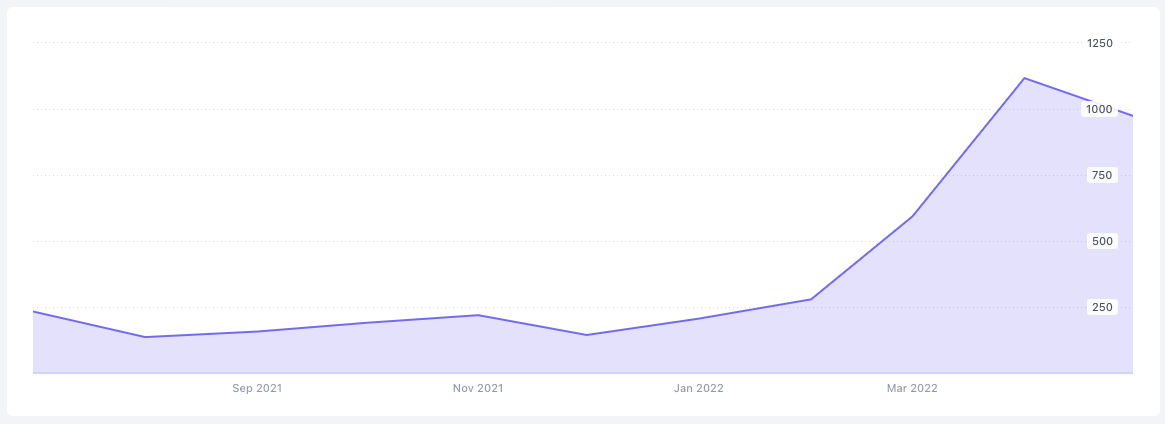
I’m Caspar. I quit my job last year to build and market my own online product. Here’s the story of why I got started and how.
Now it’s time for a retrospective, to reveal some numbers, go through some highlights and lowlights, and peer into the future. I’ll try and do this every 12 months.
1. Going solo
First off, what does it feel like to go it alone? Am I lonely? Missing colleagues? Afraid?
The answer is: it’s flipping awesome. I already feel that I have been lost to the world of employment forever. I mean, just imagine:
- I have not attended a single meeting for over a year.
- I get to choose who my customers are.
- I get to work in a beautiful office in my home every day. I have heard rumours that this may be possible as an employee, too.
- I am investing in a compounding better future for myself (and by extension for my family).
Do I miss human contact during the day? Well, I can meet up with friends for lunch. Also: I’m currently sharing my home with 8 other people. What’s even more unusual is that I am the only male and everyone else is female. But let’s not digress, ask me about it when you meet me. The point is: loneliness is not a problem.
I’m also doing more exercise than ever before and have lost quite a bit of weight.
Am I afraid? Possibly. The next 12 months will be crucial in deciding whether I can continue with my new life.
2. How do I earn money?
I earn money in 2 ways:
- Through keepthescore.com, my online product, and
- by building custom score-keeping solutions.
keepthescore.com made 9,500 USD in gross revenue from March 2021 to March 2022. In the same period, I made 13,500 USD in gross revenue by building custom solutions. Just to be clear, this is not enough and at the moment I’m still default dead.
2.1 keepthescore.com revenue
People using keepthescore.com have to pay to get extra features. It’s a one-off payment which currently costs 5.99 USD. In March 2021, when my journey started, this revenue stream was bringing in around 460 USD per month. My goal was to triple this in 12 months.
It was a goal I achieved: in March 2022 the product was making 1,560 USD per month 🎉.
However, my celebrations were short-lived, because in the following month my revenue dropped by over 20%. It seems to be a seasonal thing, because traffic dropped too. More on that next year.
Anyway, I intend to establish 2 new revenue streams in the next 12 months. The first is advertising and the other is a subscription model.
Overall, my goal is to triple my revenue again: by March 2023 I want to be at 4,500 USD per month.
By the way, I’ve made my revenue and some other metrics available on a public dashboard.
2.2 Ads on keepthescore.com
Advertising has already landed on keepthescore.com: users have been seeing ads from Google Adsense since February 2022. So far, the returns have been meagre: around 6 USD per day.
I’m hoping to switch to another more profitable ad provider. There’s 2 providers that I am interested in (AdThrive and MediaVine) but both require Google Analytics to be installed on my site. This is annoying, because I announced with great fanfare that I had removed Google Analytics from the site. I have now sheepishly added Google Analytics back to the site, in the hope that one of these 2 ad providers will accept me 😔.
2.3 Custom solutions
In 2019 a person got in touch asking if I could build them a custom scoreboard. The standard ones didn’t fit their needs. I decided that I would give it a try to see if I could establish a new revenue stream: making custom scoreboards as a kind of niche web-development agency. That first custom scoreboard was quite wonky and almost broke down several times. However, the customer paid and my new revenue stream was established.
On average, I now build one custom scoreboard a month. On top of having an alternative revenue stream, it’s also a good way of discovering new needs and solutions that may be worth turning into a self-serve product.
My most prestigious customer was Guinness World of Records, who needed a digital stop-gap solution during the pandemic. An unexpected perk was that this work led to my name actually appearing in the Guinness World of Records:
True story: I made a scoreboard for the Guinness World of Records and now my name is in the Guinness Book of Records 🥳
— Caspar v. Wrede ✨ (@wrede) January 24, 2022
(Under acknowledgements, but still....) pic.twitter.com/itNgnUDq55
I have tried to create a “productised” package for customers wanting a custom solution. Here is the landing page I made for my services, which also includes some examples.
Overall, it’s good to have another revenue stream independent of my main product. The only downside is that when I am working on custom solutions, I am not working on my product. I recently doubled my prices to focus more on my product. It had the desired effect: I’ve had no new customers at the new price point. Once I’m ready for more custom work, I will lower my prices again.
3. SEO for keepthescore.com
An area where I learned a lot over the past 12 months is SEO. SEO (or search engine optimisation) is the name for all work that will move your site closer to the top of the search engine results page for particular search terms. Below you can see that my product is on the top spot when searching for online scoreboard.

The site you see in the second spot (Score Count) used to be in the top spot. After ignoring this for some time, I eventually got round to taking a closer look at this competitor. It turns out that they were running a massive SEO scam operation. I wrote a blog post about this which is a good yarn. After publishing this post, Google punished the site, and I am now number 1 🏆.
Almost all of my SEO efforts are focussed on producing new and relevant content in the form of blog posts. The basic thing to get right is to have high-quality content that answers a question that someone could ask on Google. I try and write one of these posts per week and post them onto the keepthescore.com blog.
🤝I've committed to writing one blog post per week as part of my marketing efforts.
— Caspar v. Wrede ✨ (@wrede) March 24, 2022
✍️I always do it on a Thursday and it's hard.
⭐️But it's beginning to pay off. That makes it progressively less hard.#buildinpublic #SEO pic.twitter.com/vNJEtaxuEH
My best performing post is entitled “How to create a leaderboard using Google Sheets” and is a good example of the type of content I am trying to create:
- It aims to be high quality. No waffle. Short sentences.
- It is a direct answer to a specific search query (“How do I create a leaderboard using Google Sheets”).
- It contains a link to my product, but only right at the end.
So far, my strategy for producing content seems to be working. Here is how the traffic to the blog has developed:

By the way: I know that my content is attracting traffic. But do I know that this traffic is converting to paid users? The answer is no – and it’s something I will be working on in the next 12 months.
4. Product development for keepthescore.com
Most of my time in the past 12 months has been spent developing and improving the product. It’s also the part I enjoy most.
In general, I try and have a roadmap of high-level topics I want to tackle per week. My roadmap is heavily informed by what my users ask for. Beyond that, my product development approach is not very scientific, but I tell myself that no one ever failed by building what users ask for.
4.1 Split testing
I run experiments (split tests) which have yielded good insights so far. It usually works like this: I set up an experiment where 50% of my users (chosen randomly) will see one variant of the product, whilst the other 50% will see another variant. After waiting some time (often over 4 weeks), I check how the 2 variants have performed compared to each other. The best performing variant is then rolled out to 100% of users.
One of the many good things about running a split test is that you are forced to think about your “success metrics”. In other words, what is the actual needle that you are trying to move? I use three different metrics to determine whether an experiment is a success or not (only one metric is used per experiment):
- How often is something clicked on. This is easy to measure and a very low-level metric.
- The “activation rate” for scoreboards or leaderboards. This number reflects what ratio of newly created boards is actively used, as opposed to never being used (which means the creator of the board was just curious or got stuck or confused after creation)
- Revenue.
A successful experiment I did was pricing. For over 4 weeks, users were seeing one of 3 different prices for upgrading a board: $1.99, $3.99 or $5.99. The winner was the group with $5.99. Yes, some users were put off from upgrading in the first place, but the higher price still resulted in the highest revenue.
4.2 Product market fit
Do I have product market fit? That is a question that every founder asks themselves at regular intervals. Despite seeing a general increase in all my metrics, I am not sure whether I have actually achieved product-market fit yet. The reason is that I have been seeing linear and not exponential growth. I recently heard a good podcast (sadly I can’t remember which one), which proposed that “real” product market fit is only achieved once you see exponential growth. This resonated with me, and I’m going to continue working towards exponential growth.
I think that a major milestone on the way to getting there is finding one or more niches within the larger topic of “online leaderboards and scoreboards.” Certainly one of the things that I find very interesting is that my product covers so many possible use-cases, however this is also a big challenge. Being very broad and general means that it is hard to really focus on one group of users and their needs. It means that you cannot tailor your messaging to these users.
One of my next strategic tasks will be exploring different niches and aiming for 1 or 2 of them. I have already made tentative steps in this direction:
- Niche 1: livestreaming scoreboards The job-to-be done here is displaying a scoreboard within a live stream using software like OBS. What’s super interesting about this niche is that there are several competitors which means it’s a problem worth solving. My product seems to have an SEO advantage, and I’m hoping to make some inroads into this space. Read more about adding scoreboards to a livesteam here.
- Niche 2: WordPress Plugins I made a very rudimentary WordPress plugin to make it easier to insert boards into a WordPress post. Apparently WordPress powers a third of the internet, so I thought it would be worth a try. You could argue that a WordPress plugin is more of a distribution channel. Touché. Read the marketing post here.
5. Other projects
When I started out last year, I intended to launch at least one other project over the following 12 months. I wanted to hedge my bets.
As it turned out, that didn’t work out.
Here are three projects that I want to invest time in. Even creating some content over the next few months would be progress, so that’s the low bar I’m going to aim for. They are:
- Dinkydash.co: This was born from scratching an own itch. I wanted to make it easy for my kids to see how many days until certain events or who’s turn it is to do the chores. I’m calling it an emoji-based dashboard. A prototype is currently running in our kitchen, using a Raspberry Pi.
- Mailmouse.co: Another product born from necessity. The problem I’m solving here is giving me and my wife a joint email address. We’re already using it and it works great, but it’s still barely a prototype.
- Insult-o-matic: This is a joke android app that I made which clocked up 400.000 downloads. I need to invest some time to make it monetise.
6. What do I want to achieve in 2022/23?
So here’s the goals I’m setting myself for the next 12 months:
- Increase keepthescore.com revenue by 300%. An important part of this goal will be adding subscription payments.
- Niche-down – find some niches and focus on them. I can then tailor my acquisition channels to these customers.
- Fully launch at least 1 other product.
- Make my core-product even better.
The most important goal here is revenue. If I fail here, if I remain default dead, I will have to accept that my new life is wonderful but unsustainable. I don’t have to wait too long to find out.
That’s all for now. Follow me on Twitter to keep updated.
Thanks for reading this 100% hand-written post! Follow me on LinkedIn for more or check out my projects.